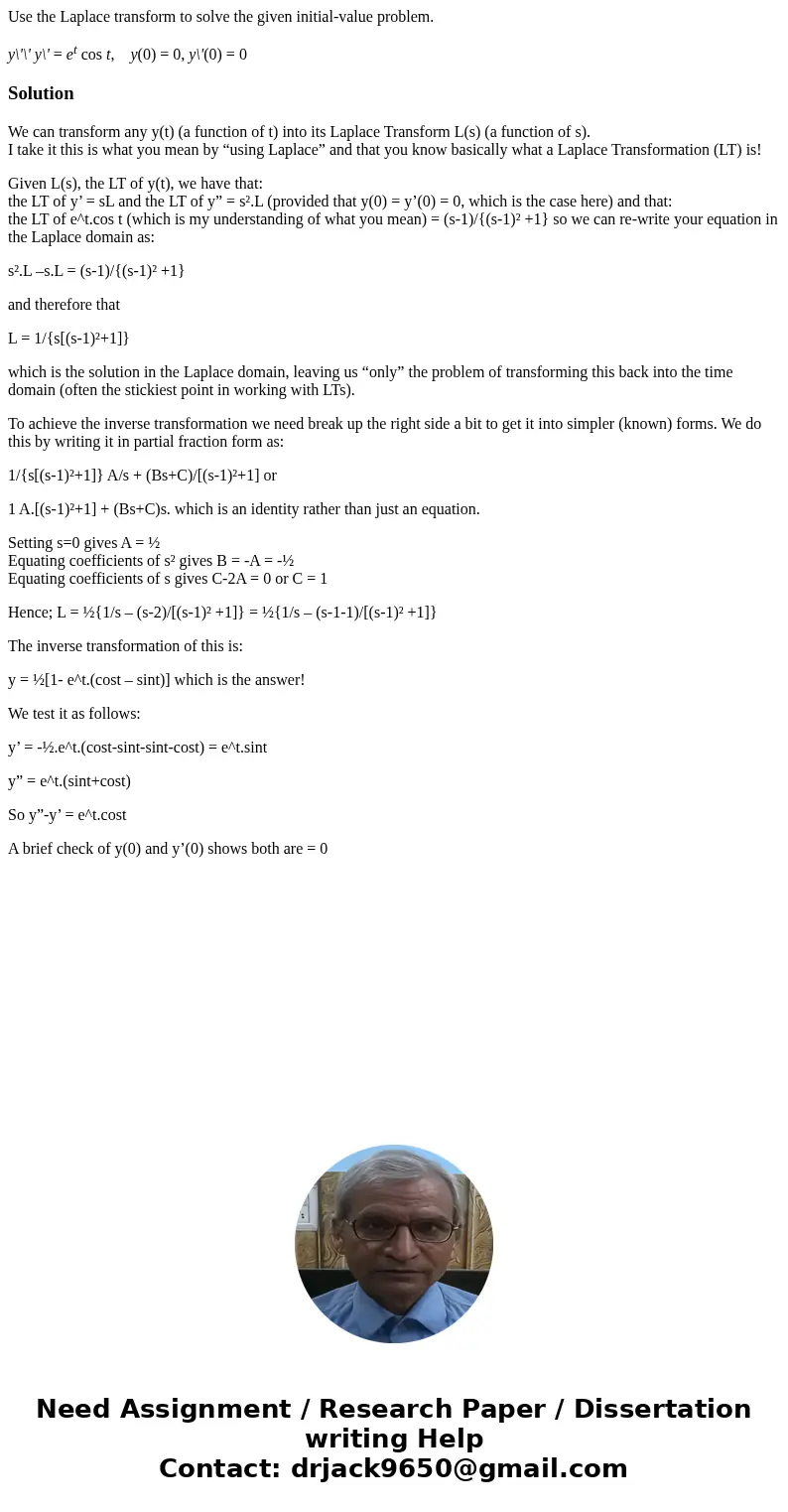Use the Laplace transform to solve the given initialvalue pr
Use the Laplace transform to solve the given initial-value problem.
y\'\' y\' = et cos t, y(0) = 0, y\'(0) = 0
Solution
We can transform any y(t) (a function of t) into its Laplace Transform L(s) (a function of s).
I take it this is what you mean by “using Laplace” and that you know basically what a Laplace Transformation (LT) is!
Given L(s), the LT of y(t), we have that:
the LT of y’ = sL and the LT of y” = s².L (provided that y(0) = y’(0) = 0, which is the case here) and that:
the LT of e^t.cos t (which is my understanding of what you mean) = (s-1)/{(s-1)² +1} so we can re-write your equation in the Laplace domain as:
s².L –s.L = (s-1)/{(s-1)² +1}
and therefore that
L = 1/{s[(s-1)²+1]}
which is the solution in the Laplace domain, leaving us “only” the problem of transforming this back into the time domain (often the stickiest point in working with LTs).
To achieve the inverse transformation we need break up the right side a bit to get it into simpler (known) forms. We do this by writing it in partial fraction form as:
1/{s[(s-1)²+1]} A/s + (Bs+C)/[(s-1)²+1] or
1 A.[(s-1)²+1] + (Bs+C)s. which is an identity rather than just an equation.
Setting s=0 gives A = ½
Equating coefficients of s² gives B = -A = -½
Equating coefficients of s gives C-2A = 0 or C = 1
Hence; L = ½{1/s – (s-2)/[(s-1)² +1]} = ½{1/s – (s-1-1)/[(s-1)² +1]}
The inverse transformation of this is:
y = ½[1- e^t.(cost – sint)] which is the answer!
We test it as follows:
y’ = -½.e^t.(cost-sint-sint-cost) = e^t.sint
y” = e^t.(sint+cost)
So y”-y’ = e^t.cost
A brief check of y(0) and y’(0) shows both are = 0

 Homework Sourse
Homework Sourse